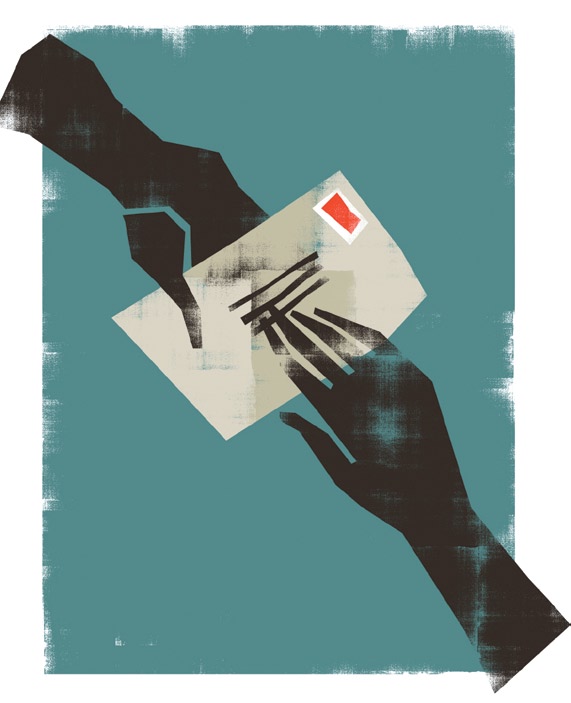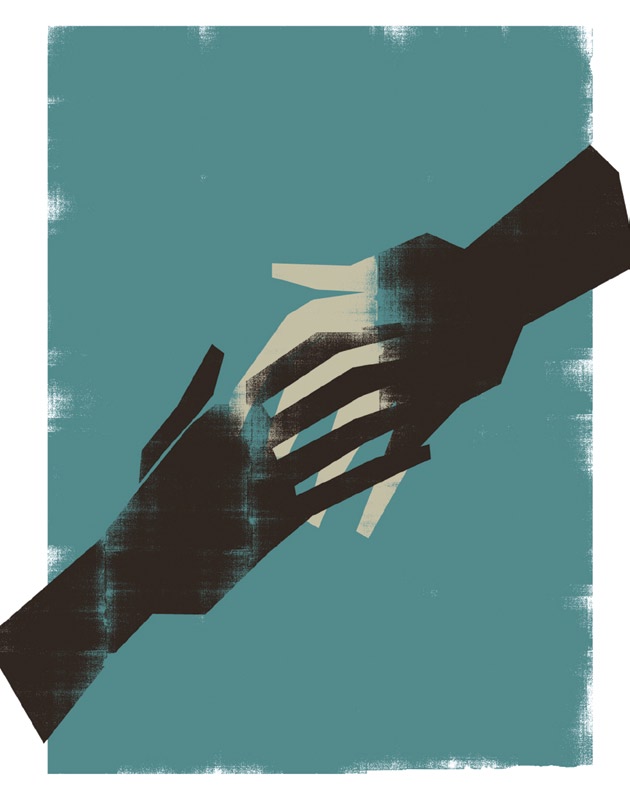The Future of the Letter
by Anne Boyle
The Scholar sits down to write, and all his years of meditation do not furnish him with one good thought or happy expression; but it is necessary to write a letter to a friend, — and, forthwith, troops of gentle thoughts invest themselves, on every hand, with chosen words.
Ralph Waldo Emerson was probably not exaggerating when he described those “troops of gentle thoughts” that came to him when he sat down to write a friend. Indeed, letter writing inspired him so much that it took more than 30 years for editors Rusk and Tilton to publish the hundreds of pages found in 10 volumes of Emerson’s letters.
What accounted for the amazing capaciousness of his epistles? The thought of an absent friend? The time spent in solitude with pen and paper? We know that Emerson’s habit of letter writing was not remarkable. From the 18th through the 20th centuries, we have rich access to history and feeling through letters that chronicle lives across race, class and cultures. So many participated in the epistolary tradition — lovers, warriors, businessmen, the leisure class, immigrants, the bereaved and slaves, like Harriet Jacobs, petitioning for freedom.
As a graduate student in the 1980s, before the advent of digital literacy, I became immersed in the lives of two prolific letter writers who shaped my career. The graduate director at my university asked me and a female friend to help an elderly woman, with failing eyesight, write letters to those who sent condolences after her husband’s death.
Rather reluctantly, but greatly in need of a second job, I mulled over whether I should accept such “feminized” labor. But I soon realized I had a remarkable opportunity. Although she had been known as a prominent doctor’s wife, Mrs. Kohn lived a rich life of her own; under her maiden name, Sally Wood, she had been a World War I nurse, an activist, a novelist and a translator. Transcribing letters at her dining room table, I realized Mrs. Kohn grieved not only for her husband, but also for her close friend, Caroline Gordon, who was dying in Mexico. The two women were often separated, but faithfully exchanged letters. Kohn had Gordon’s letters spanning decades in her attic.
Because a collection of Gordon’s short stories had been recently published and many of her novels were being reissued, Wood thought that Gordon’s letters would provide “young feminists” an understanding of the complex life led by women writers of the early 20th century. At first, Gordon resisted having her letters made public, but finally permitted her friend to edit a volume. The very first letter I transcribed, dated 1924, powerfully described Caroline Gordon’s anguish at losing not only Wood’s company, but also her infant daughter, whom Wood helped deliver a few weeks earlier. Familial and economic pressures led Gordon to send her daughter to her mother in Kentucky, while she and husband, Allen Tate, struggled to become writers in New York City. Over the next months, Mrs. Kohn told me stories of her friend’s life as she debated which letters should be shared; I typed, listened carefully and wrote my dissertation on Gordon.
Writing practices change over time and we, as writers and scholars, have to consider how new technologies affect our sense of history, our scholarship, our sense of privacy and community. We rarely depend on the postal service to keep in touch with friends. We rarely hold letters in our hands, and my students tell me they have difficulty reading cursive. As we email, blog, tweet or post, we sometimes act with the immediacy of our medium and send messages we wish we could recapture.
We share our lives with our social networks, rather than writing individual friends. As scholars, we will soon turn toward digitized documents and scan newspapers and public records to analyze our past. But we may miss the ease and inspiration Emerson felt as he wrote his letters. We may never share Emily Dickinson’s ritualistic reading of hers:
The Way I read a Letter’s – this
‘Tis first – I lock the Door –
And push it with my fingers – next –
For transport it be sure –
And then I go the furthest off
To counteract a knock –
Then draw my little Letter forth
And slowly pick the lock –
– (“636”, excerpt)
Emerson, Gordon, and, particularly, Dickinson had time to withdraw, to reflect, to narrate their lives through letters, but each experienced the absence of others so keenly they had to use words to maintain both their lives and their friendships. In the digital age, we friend with a click and interpret fragments across the screen.
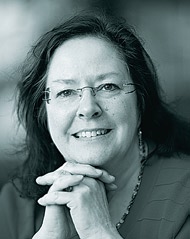 Anne Boyle, Ph.D., is professor of English. Her teaching and research interests include women’s and gender studies, women in literature and writing and technology.
Anne Boyle, Ph.D., is professor of English. Her teaching and research interests include women’s and gender studies, women in literature and writing and technology.
1Ralph Waldo Emerson, “Friendship,” Essays: First Series. Emerson: Essays and Poems. New York:
Library of America Edition, 1996.
The Future of the Conversation
by David Phillips
I’ve been thinking a lot these days about how the way we interact is mediated through interfaces such as Twitter, Facebook and instant messaging. On first learning of these tools, I wondered how anything meaningful could be communicated in such shorthand. I read with consternation newspaper articles speculating about the effect of heavy use of the Internet on children’s ability to process complex thoughts and to hone social interaction skills. Will the sound bite and the Internet post replace what for me seem intrinsically to be deeper forms of engagement?
Mulling over these questions, I wonder if such speculation is alarmist. Could I be among the millions of individuals experiencing the separation anxiety that comes to every generation when it senses that it is depending on outmoded forms of communication? How did those who came before me feel when email messages replaced the old-fashioned letter and the computer replaced the typewriter? Were there qualitative and perceptual shifts that took place in communication styles and modes of interaction, or has new media simply altered the form of our written and spoken utterances?
Like many of my colleagues, I have started thinking about the quality of interactions that take place in such abbreviated formats. Recalling how my sense of community is so intimately tied to direct encounters, I can’t imagine a world where I am unable to relish the serendipity of a conversation over a cup of coffee or a spontaneous get-together.
Perhaps I am unfairly characterizing the move to new digital formats for transmitting information. Maybe the “tweets” and online postings aren’t a substitute at all, but merely a way of supplementing current forms of communication. In the same way, the hours that my students and younger colleagues spend surfing the Web, reviewing news items on RSS feeds or reading the Facebook walls of friends, are equally enriching in reinforcing a sense of community. For isn’t that what, at its heart, communication enables? The shared Latin root comm_ni(s) for the words “community” and “communication” means “common,” and it embodies the concept of a shared, meaningful experience.
As I contemplate this topic, I realize that there is an inherent danger in substituting face-to-face contact with relationships that exist almost entirely in the digital domain. The essence of our “selves” is in some ways reduced in the latter case. What makes an individual feel inherently more comfortable texting in a situation where they are simultaneously interacting with a live person, or prefer listening to a presentation rather than interacting with someone directly in a two-way dialogue?
As both a teacher and a trained planner, I am reminded in this debate of the dialogue during the past two decades in the realm of urban planning. Theories of smart growth and New Urbanism have trumpeted the importance of the design features of Main Street that made urban experiences meaningful for previous generations of Americans, featuring design elements that encourage the types of interaction that give our lives a personal sense of connection to the world around us. Rather than isolating us in our cars, our suburban homes and our workplaces, such design encourages a shared sense of place that encourages interaction.
Although critics claim these goals are unrealistic, it seems to me that, in recasting earlier notions of community design, planners have identified a basic need. Such a development is parallel to the rediscovery of the qualities of good conversation in an era of quick, nonpersonal, digitally mediated forms of communication.
There is no denying that a revolution is taking place in our approaches to communication. I envision a renewed appreciation for the humanities, live conversation and Socratic debate in an era that tends to value the convenience and wealth of choices available with digital forms of communication.
Rather than assuming a replacement of the old with the new, we can appreciate the availability of an expanding panoply of options in our modes of communication. Yesterday’s chat is not supplanted by today’s tweet, but stands alone as a key tool in our verbal and digital arsenal. Although Descartes claimed, “I think, therefore I am,” in today’s world it appears that proof of existence extends beyond thinking to speaking, tweeting and texting.
The question I keep asking in the face of these developments is not “Where are we going with all of this?” but “How are we being changed by these advances?” and “What can we do to ensure that humanistic values are upheld in all forms of communication?”
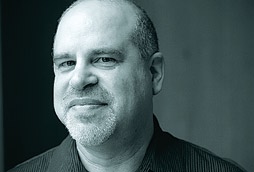 David Phillips, Ph.D., is associate professor of the program in humanities. He was project director for the grant from the National Endowment for the Humanities which supports the University’s new Humanities Institute.
David Phillips, Ph.D., is associate professor of the program in humanities. He was project director for the grant from the National Endowment for the Humanities which supports the University’s new Humanities Institute.
The Future of the Book
by Melissa Jenkins (’01)
I began this reflection on Feb. 16, the day that Borders Books and Music filed for Chapter 11 bankruptcy. Details followed via an emailed statement from Borders CEO Mike Edwards, which I read on the small screen of my Blackberry. “Borders pioneered the in-store experience, providing customers with a vast assortment of books in a warm, relaxing environment,” he wrote, “and we intend to build on this. Our stores will continue to be community gathering places.”
Feb. 16 was also the day that the owners of Special Occasions, a Winston-Salem landmark for 27 years and one of the largest black-owned bookstores in the South, declared the need to close their doors. Co-owner Ed McCarter said to a Winston-Salem Journal reporter, “Technology is great until it interacts with your business or your job.”
Later that day, I absentmindedly flipped through the virtual pages of an e-book while watching breaking news unfold on cable TV. I already feel nostalgia for the musty smell of a vintage hardback or the weight of a large newspaper spread out across my lap. But, I have to admit that I am part of the problem.
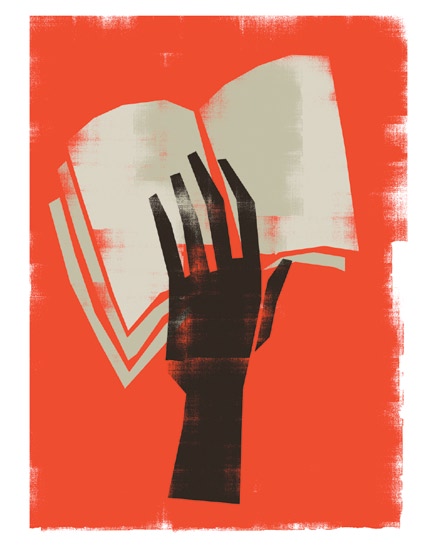
In my four years as an undergraduate at Wake Forest, and my three years as an assistant professor, I entered Special Occasions exactly twice. The first time was to buy my books for “The Sociology of the Black Experience,” taught by former Wake Forest Professor Cheryl Leggon. Leggon wanted her sheltered undergraduates, used to collecting textbooks under Taylor Hall, to go into East Winston and patronize a locally owned bookstore. There was much weeping and gnashing of teeth, I assure you. (These days, students would have sidestepped the assignment via Amazon.com).
The second time I entered Special Occasions, it was to collect enough Obama gear to get me through the 2008 campaign. The store was already starting to feel more like a gift shop than a bookstore, a model for continued viability already discussed among Borders executives (“Build-a-Bear” workshops, anyone?).
One way of thinking about the “Future of the Book” is to focus on the decline of the bookstore and the future of the material book. The buildings and their contents may succumb to the immediacy of the Internet, the tablet revolution, the conveniences of online shopping, and the lost “aura” surrounding complete and unabridged works that has also plagued the music and home video industries. So, maybe we’re just talking about a transition away from paper – an evolution in reading that will repopulate a few hundred forests and make our bags lighter at airports.
The buying and reading of books may become a more isolated experience, with fewer “happy accidents” leading us to select an unexpected title from a shelf packed with possibilities. Or, maybe not. Perhaps online browsing, and online book ratings, can approximate the in-person experience, and make reading communities larger and more diverse as a result.
So far, so good. Yet, if the packaging, transport and sale of books were the whole story, I probably wouldn’t have been asked to write this reflection. The statistics about American reading practice paint a grim picture that goes beyond the question of “paper or plastic.” Reading scores are dropping within our primary and secondary schools, even as postgraduate study becomes a crucial indicator of an individual’s long-term economic well-being.
The National Endowment for the Arts released reports in 2004 and 2007 that provide sobering statistics (view the full summary at www.nea.gov/news/news07/TRNR.html). For example, the average American, aged 15-24, watches television for two hours per day but reads for only seven minutes per day. In 2002, only 52 percent of young people, aged 18-24, read a non-required book for pleasure. Twenty percent of 17-year-olds categorized themselves as “non-readers” in 2004; and in 2005, only 35 percent of high school seniors were “proficient” in reading. Even college graduates have shown marked declines in the quality and amount of daily reading.
Such statistics matter because, notes the report, “Literary readers are more likely than non-readers to engage in positive civic and individual activities — such as volunteering, attending sports or cultural events and exercising.” Thus, as we negotiate the new marketplace for books in the United States and elsewhere, we should not lose sight of the real stakes behind the real debate. Instead of worrying about the future of the material book, we should just hope that young people don’t abandon reading in all of its forms.
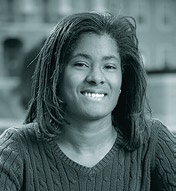 Melissa Jenkins (’01), Ph.D., is assistant professor of English. Her teaching and research interests include nineteenth century British literature and the history of the novel.
Melissa Jenkins (’01), Ph.D., is assistant professor of English. Her teaching and research interests include nineteenth century British literature and the history of the novel.
The Future of the Handshake
by John Llewellyn
There is a recurring narrative of modern life that suggests again and again that the “next new thing” will make all of the other “things” obsolete. Why do we take all of these prognostications seriously? Indeed, we cackle when we look back to the ’50s and ’60s and revisit their predictions that our 21st century travel would be by jetpack and monorail and we’d all be living in the world of “The Jetsons.”
This essay ruminates on the future of the handshake, as literal act and as metaphor for direct human contact versus technological substitutes. Even now, is Steven Jobs hunkered down somewhere in Silicon Valley developing the iHand so that we might replace this venerable mode of exchange with something shiny from Apple? No matter; human touch, and its most ubiquitous franchise, the handshake, are here to stay.
The most substantive human and societal challenges are represented by the handshake. Its precise origins are in mists of pre-history as a bevy of scholars will tell you. As a mode of greeting, it signals equality, mutual acceptance and displays the absence of weapons. The fact that the handshake is nearly automatic is not a sign of its lack of significance but rather of the depth to which it is engrained in our social exchanges.
If you doubt it, consider the restraint necessary to withhold one’s hand when another offers his or hers; that withholding could be explained only by a serious personal injury to one’s self or as a categorical rejection of the other party. Recall the significance attached to Secretary of State Hillary Clinton’s handshake with Somali President Sharif Sheikh Ahmed in 2009. Before the meeting, the “will he or won’t he” speculation was rife; with that one act the Somali leadership reached out to the modern world and rejected the position of Islamist extremists that men have no physical contact with women unrelated to them. The profound meaning of that handshake is not something that Twitter and its 140 characters can touch.
The fact of the matter is that the perennial human problems are encountered in human face-to-face interactions; that is the mode for their solution as well. The legendary media scholar Marshall McLuhan (originator of the concepts of “Global Village” and “The Medium is the Message”) argued that media function as extensions of our senses. So a light bulb is a medium and becomes an extension of our eyes. By that logic, the media can help us to do important human things with greater speed or reach — and we value those benefits — but the core issues of our lives and of society remain face-to-face and human.
I’ll offer evidence from your own experience: if you have a student at Wake Forest now, the chances are great that both of you have cell phones and use them to communicate several times a week (per day?). Since this technology is so effective, there is no need for that child to come home for a weekend or at semester break, right? You are current with each other’s lives, what else is there? If your kids are a bit older, then there is always videoconferencing via Skype to allow you to see the new grandchild. No real need to travel there and actually hold the baby, is there? In both cases you want face-to-face contact rather than via a microwave signal; you want to see them, hug them, and be in their presence. The new technology is a help to be sure, but you have no doubt there is something deeper and richer in face-to-face interactions. What is true in your family is all the more true in the wider world.
While it appears simple, the handshake is actually a subtly coordinated cooperative act. We notice this feature only when something goes awry with this “automatic” activity, and we have to unwind the momentary awkwardness. Consider the special coordination and playfulness that go into the handshake/salute routines displayed by some basketball and baseball players after a notable play. They have taken the basic art form of the handshake and customized it to give it a larger and idiosyncratic meaning. In this sense, there is a grammar of the handshake that establishes both what is normal and how the ritual can be made unique and memorable.
Courtesy of new technologies, we are told we live in a world of virtual realities. The pivotal point is the word “virtual.” Its advocates want you to think of the term as meaning “nearly real.” The central reality is that that which is sold to us as “nearly real” is most assuredly not real. Do you want to see that grandchild via Skype or hold her in your arms? You know the difference.
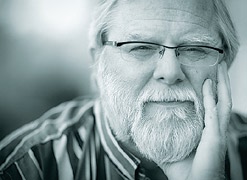 John Llewellyn, Ph.D., is associate professor of communication. His teaching and research interests include public speaking, organizational communication, urban legends and freedom of speech.
John Llewellyn, Ph.D., is associate professor of communication. His teaching and research interests include public speaking, organizational communication, urban legends and freedom of speech.
